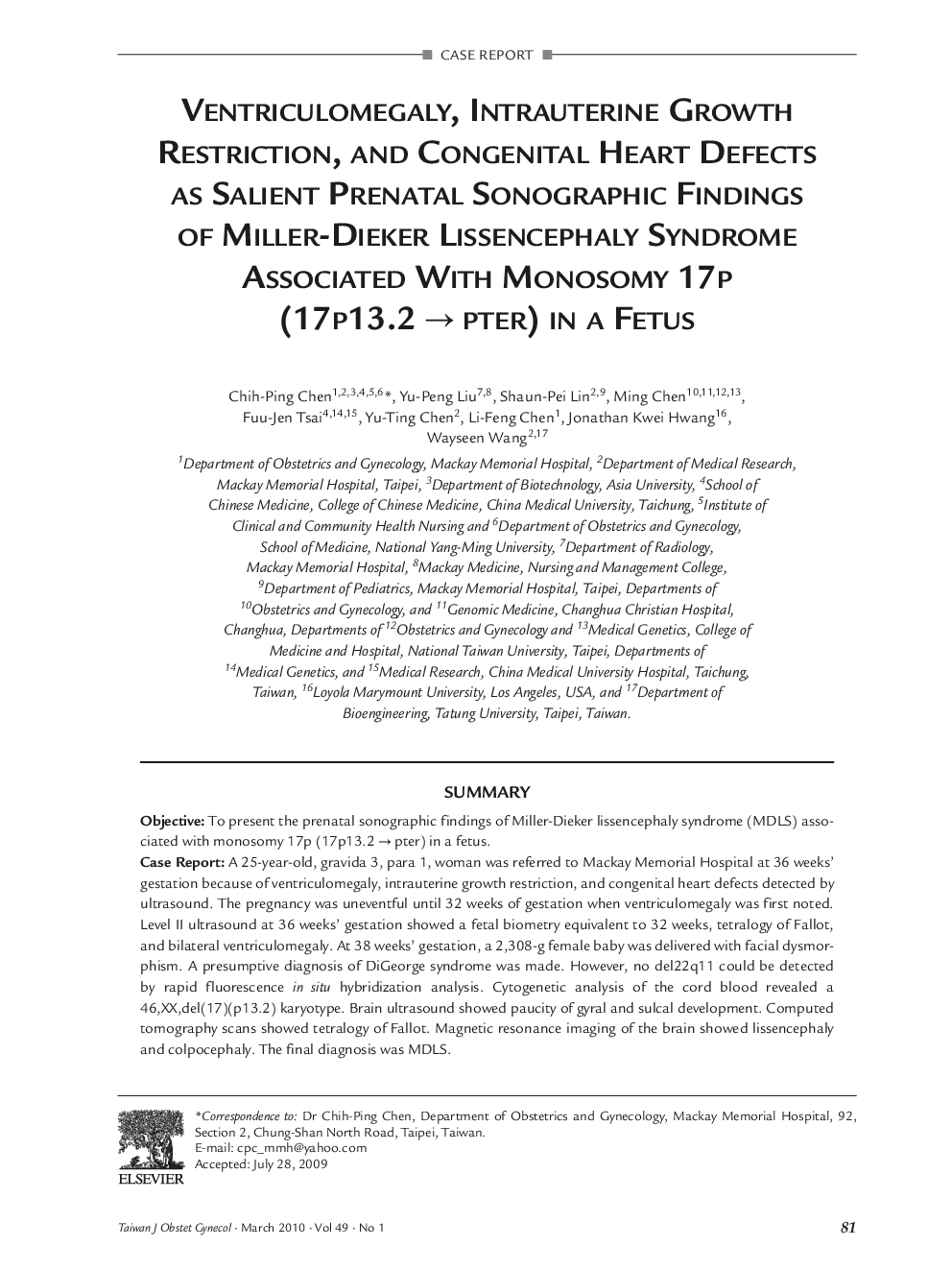| Article ID | Journal | Published Year | Pages | File Type |
|---|---|---|---|---|
| 3976042 | Taiwanese Journal of Obstetrics and Gynecology | 2010 | 6 Pages |
SummaryObjectiveTo present the prenatal sonographic findings of Miller-Dieker lissencephaly syndrome (MDLS) associated with monosomy 17p (17p13.2 → pter) in a fetus.Case ReportA 25-year-old, gravida 3, para 1, woman was referred to Mackay Memorial Hospital at 36 weeks' gestation because of ventriculomegaly, intrauterine growth restriction, and congenital heart defects detected by ultrasound. The pregnancy was uneventful until 32 weeks of gestation when ventriculomegaly was first noted. Level II ultrasound at 36 weeks' gestation showed a fetal biometry equivalent to 32 weeks, tetralogy of Fallot, and bilateral ventriculomegaly. At 38 weeks' gestation, a 2,308-g female baby was delivered with facial dysmorphism. A presumptive diagnosis of DiGeorge syndrome was made. However, no del22q11 could be detected by rapid fluorescence in situ hybridization analysis. Cytogenetic analysis of the cord blood revealed a 46,XX,del(17)(p13.2) karyotype. Brain ultrasound showed paucity of gyral and sulcal development. Computed tomography scans showed tetralogy of Fallot. Magnetic resonance imaging of the brain showed lissencephaly and colpocephaly. The final diagnosis was MDLS.ConclusionVentriculomegaly and intrauterine growth restriction are important prenatal ultrasound markers of MDLS. Prenatal diagnosis of conotruncal heart defects in association with ventriculomegaly and intrauterine growth restriction should include a detailed investigation of MDLS in addition to DiGeorge syndrome.
